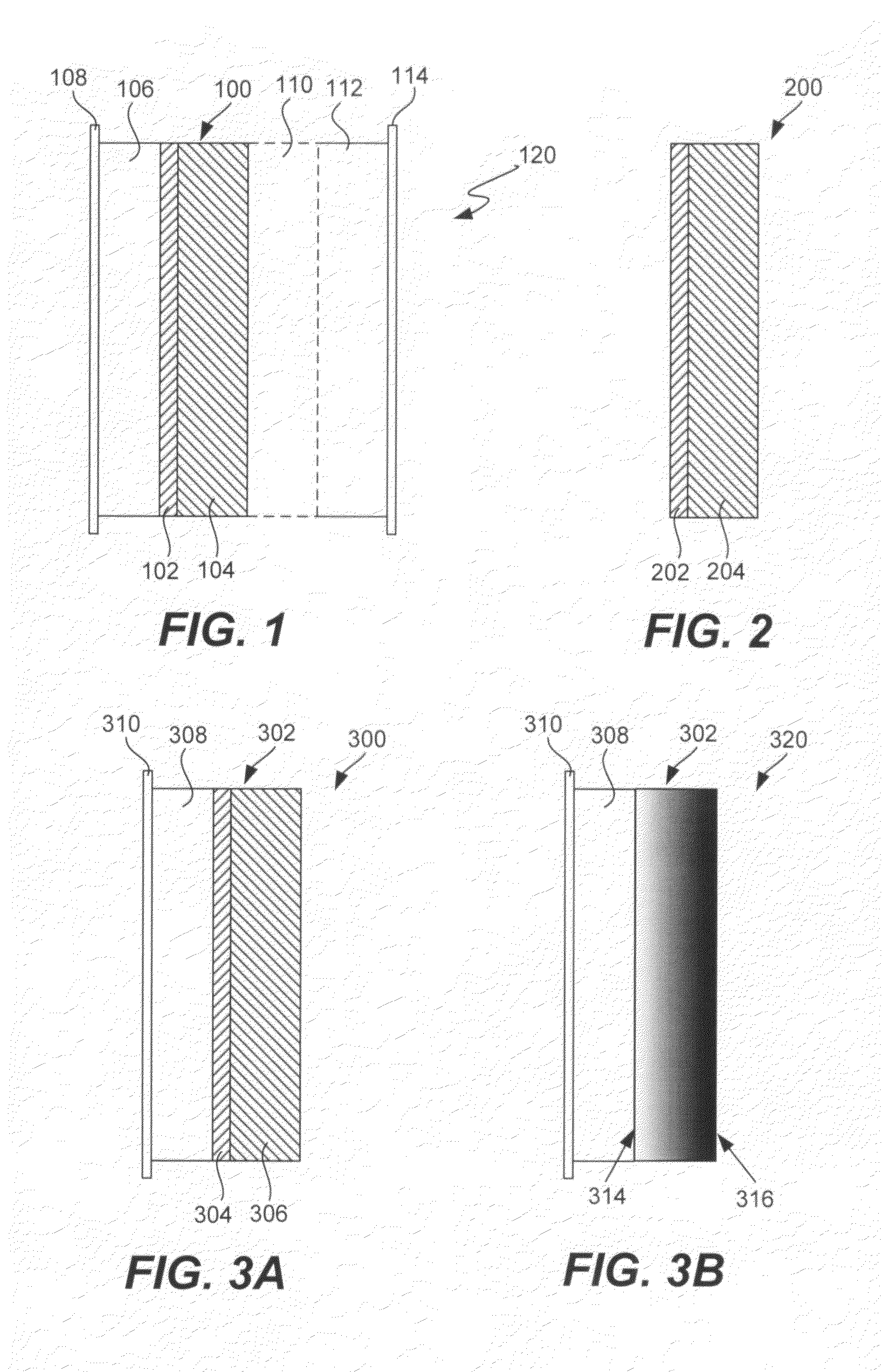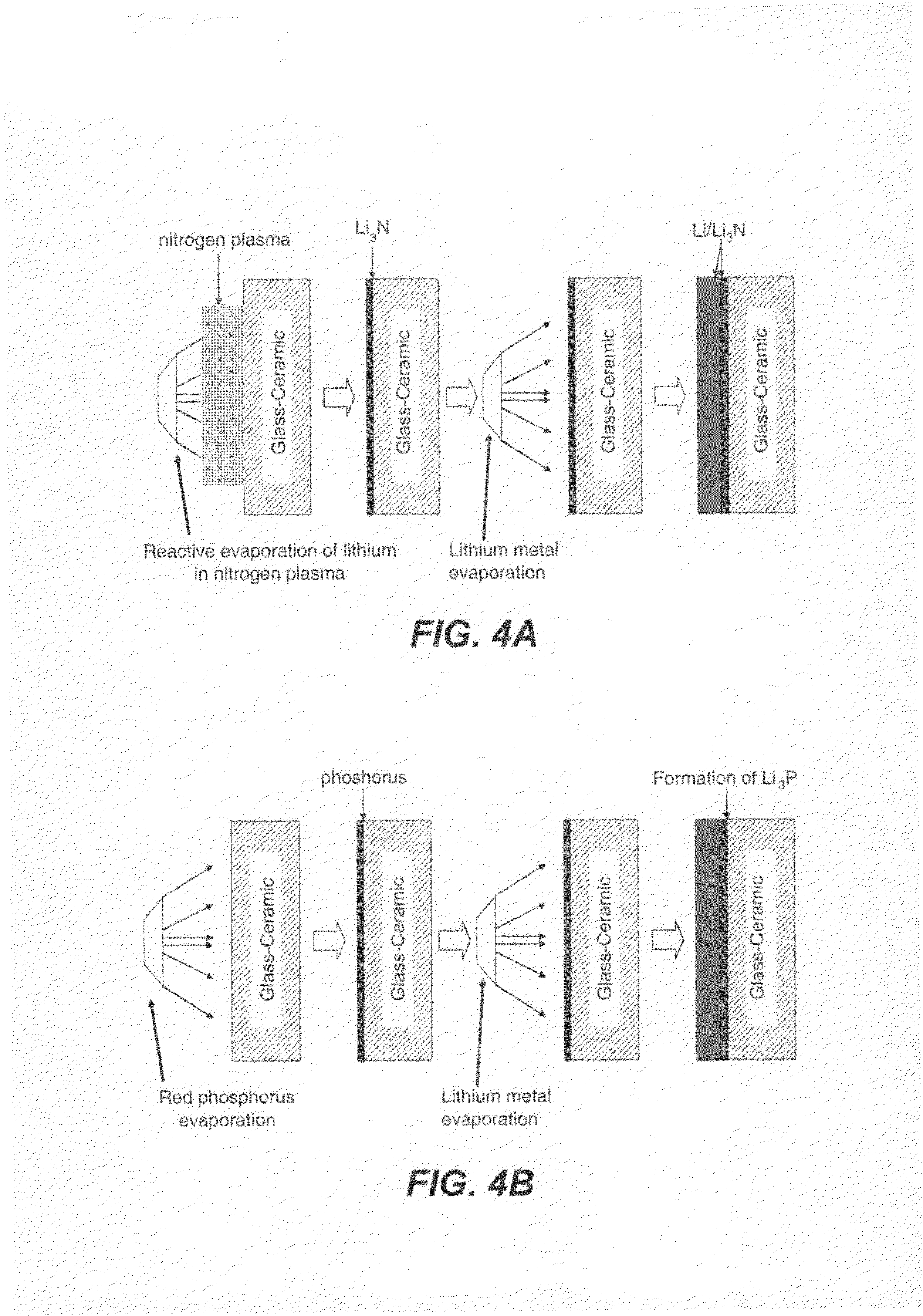Electrochemical device component with protected alkali metal electrode
a technology of alkali metal electrodes and electrochemical devices, which is applied in the direction of non-aqueous electrolyte cells, cell components, cell component details, etc., can solve the problems of failure of rechargeable lithium metal batteries, and battery short circuit, etc., to achieve high overall ionic conductivity, facilitate manufacture, and high level of ionic conductivity
- Summary
- Abstract
- Description
- Claims
- Application Information
AI Technical Summary
Benefits of technology
Problems solved by technology
Method used
Image
Examples
example 1
Impedance Measurements Using LIPON in Composite Protective Layer
[0084]Approximately 0.75 microns of LiPON was RF sputter-deposited onto copper foil samples in a MRC 8671 Sputter Deposition system. Some of the copper foil samples were coated with an additional layer of Cu3N (approximately 0.9 microns) by RF Magnetron sputtering of a copper target in a nitrogen environment. One LiPON / Cu sample was transferred to a vacuum evaporator, and approximately 3 to 7 microns of lithium metal was evaporated directly onto the LiPON surface. Another Cu3N / LiPON / Cu sample was coated with a similar thickness of lithium. The impedance for the unprotected LiPON / Cu sample is shown in FIG. 7A; the evaporation of lithium onto the LiPON surface led to a dramatic rise in the resistance of the sample, which is undesirable for electrochemical devices. The beneficial effects of the protective Cu3N film is seen in FIG. 7B; the impedance is dramatically lower in this case.
example 2
Impedance Measurements Using Glass-Ceramic Active Metal Ion Conductor (OHARA) in Composite Protective Layer
[0085]Samples of Li+ conductive glass-ceramic plates were received from OHARA Corporation. Approximately 3 to 7 microns of lithium was evaporated directly onto the OHARA glass-ceramic plate. The deleterious reaction of lithium with the electrolyte is seen in FIG. 8A; the impedance of the sample is quite large, approximately 40,000 Wcm2. Onto a second sample of glass-ceramic plate was RF Magnetron sputter-deposited a film of Cu3N (˜0.9 microns thick), with subsequent evaporation of about 3 to 7 microns of lithium. The beneficial effect of the Cu3N film can be seen in FIG. 8B; the impedance of the glass-ceramic is dramatically improved relative to the plate without the Cu3N film. Superimposition of FIGS. 8A and 8B in FIG. 8C further illustrates the dramatic improvement in performance for the Cu3N protected plate. The ionically conductive nature of the protective film is seen in 8...
PUM
| Property | Measurement | Unit |
|---|---|---|
| ionic conductivity | aaaaa | aaaaa |
| ionic conductivity | aaaaa | aaaaa |
| ionic conductivity | aaaaa | aaaaa |
Abstract
Description
Claims
Application Information
 Login to View More
Login to View More - R&D
- Intellectual Property
- Life Sciences
- Materials
- Tech Scout
- Unparalleled Data Quality
- Higher Quality Content
- 60% Fewer Hallucinations
Browse by: Latest US Patents, China's latest patents, Technical Efficacy Thesaurus, Application Domain, Technology Topic, Popular Technical Reports.
© 2025 PatSnap. All rights reserved.Legal|Privacy policy|Modern Slavery Act Transparency Statement|Sitemap|About US| Contact US: help@patsnap.com



